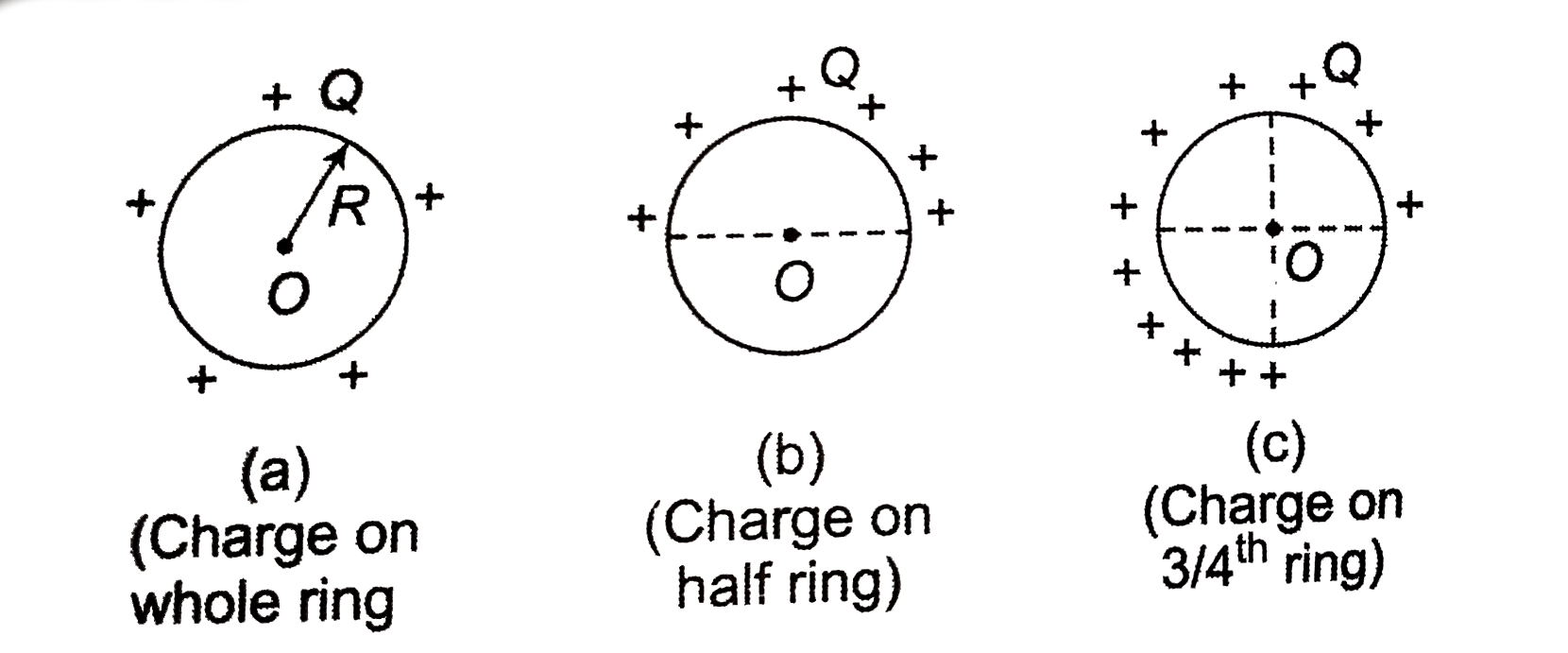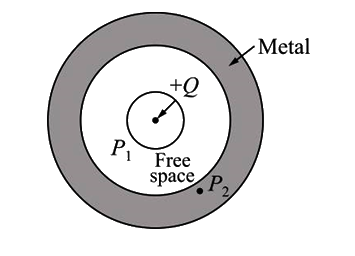Complete Solutions to Revision Exercises (Short Answer ) of chapter ELECTRIC CHARGES AND FIELDS of Class 12 book with complete answers and questions
| Class 12 | PHYSICS |
| Chapter | ELECTRIC CHARGES AND FIELDS |
| MODERN PUBLICATION | Revision Exercises (Short Answer ) |
| Number Of Questions | 38 |
| Academic Year | 2023-24 |
Two point charges placed at a distance `r` in air experience a certain force. Then the distance at which they will experience the same force in a medium of dielectric constant `K` is
View SolutionDefine conductor and insulator giving examples.
View SolutionWhat is earthing? How it is done? What is its significance?
View SolutionHow can you charge a metal sphere negatively without touching it?
View SolutionState and explain the principle fo superposition as applied to electrostatic force on a charge due to a number of other charge.
View Solutionelectric field || physical significance of electric field
View SolutionTwo positive point charges are `3 m` apart their combined charge is `20 mu C`. If the force between them is `0.075 N`, the charges are
View SolutionWrite the expression for electric field intensity at any point outside and inside due to a charged spherical shell.
View SolutionDoes Coulomb's law of electric force obey Newton's third law of motion ?
View SolutionWhat do you mean by area vector? What is its direction?
View SolutionDefine electric flux. Write its SI unit. A charge q is enclosed by a spherical surface of radius R. If the radius is reduced to half, how would the electric flux through the surface change ?
View SolutionWhen an electric dipole is held at an angle in a uniform electric field, the net force F and torque `tau` on the dipole are
View SolutionDerive an expression for the intensity of the electric field at a point on the axial line of an electric dipole.
View Solution(a) Derive and expression for the electric field at any point on the equatorial line of an electric dipole.
(b) Two identical point charges, q each kept 2m apart in air. A third point charge Q of unknown magnitude and sign is placed on the line joining the charges such that the system remains in equilibrium. Find the position and nature of Q.
View SolutionGive the expression for torque experienced by an electric dipole in an uniform electric field in a vector form. Give the meaning of the symbols used.
View SolutionA positive point charge (+q) is kept in the vicinity of an uncharged conducting plate. Sketch electric field lines originating from the point on to the surface of the plate.
Derive the expression for the electric field at the surface of a charged conductor.
View SolutionState and prove Gauss's law in electrostatics.
View SolutionUsing Gauss's law, derive an expression for the electric field intensity at any point near a uniformly charged thin wire of `charg e//l eng th = lambda C//m`.
View SolutionCalculate distance of the point from the centre of a uniformly charged ring on its axis, where it electric field intensity becomes maximum.
View SolutionDraw a graph of electric field E(r) with distance r from the centre of the shell for `0 le r le 0` .
View SolutionState Gauss's law in electrostatics. Applying Gauss's law derive the expression for electric intensity due to an infinite plane sheet of charge.
View SolutionIs coulomb's law in electrostatics valld in all situations ?
View SolutionTwo positive charges which are 0.1m apart repel each other with a force of 18N. If the sum of the charges be `9 muC`, calculate their separate values.
View SolutionPlot a graph showing the variation of coulomb force (F) versus `((1)/(r^(2)))`, where r is the distance between the two charges of each pair of charges:
`(1mu C,2mu C) and (2muC-3muC)`. Interpet the graphs obtained.
View SolutionA charge `Q` is distributed uniformly on a ring of radius `R` as shown in the following diagrams. Find the electric potential at the center `O` of the ring.
(a)
View SolutionState Gauss's law in electrostatics. Using this law derive an expression for the electric field due to a uniformly charged infinite plane sheet.
View SolutionA small metal sphere carrying charge +Q is located at the centre of a spherical cavity inside a large uncharged metallic spherical shell as shown in the figure. Use Gauss’s law to find the expressions for the electric field at points `p_(1)` and `p_(2)` . Also draw the pattern of electric field lines in this arrangement.

View SolutionDefine electric dipole moment. Is it a scalar or a vector? Derive the expression for the electric field of a dipole at a point on the equatorial plane of the dipole.
View SolutionA dipole of moment `vecp` is placed in a uniform electric field `vecE`. The force on the dipole is `vecF` and the torque is `vec(tau)`
View Solution(a) Three point charges q,-4q and 2q are placed at the vertices of an equilateral triangle ABC of side 'l' as shown in the figure. Obtain the expression for the magnitude of the resultant electric force acting on the charge q.
(b) Find out the amount of the work done to separate the charges at infinite distance.

View SolutionTwo point charges `q_(A)=3muC` and `q_(B)=-3muC` are located 0.2 m apart in vacuum.
a. What is the electric field at the mid point O of the line AB joining the two charges?
b. If a negative test charge of magnitude `1.5xx10^(-9)C` is placed at this point, what is the force experienced by the test charge?

View SolutionUsing Gauss's law, derive an expression for the electric field intensity at any point near a uniformly charged thin wire of `charg e//l eng th = lambda C//m`.
View SolutionTwo point charges `q_(A) = 3 mu C` and `q_(B) = -3 muC` are located 20 cm apart in vaccum (a) what is the electric field at the mid point O of the line AB joining the two charges ? (b) If a negative test charge of magnitude `1.5xx10^(-9) C` is placed at the point, what is the force experienced by the test charge ?
View SolutionObtain the expression for the torque `vectau` experienced by an electric dipole of dipole moment `vecp` in a uniform electric field, `vecE`. What will happen if the field were not uniform?
View SolutionUse Gauss' theorem to find the electric field due to a uniformly charged infinitely large plane thin sheet with surface charge density `sigma`.
View SolutionDefine dielectric constant. Two charges `+-20xx10^(-6)C,` placed 2 mm apart from an electric dipole. Determine the electric field at a point 10 cm away from the centre of the dipole on its perpendicular bisector. Given, `1/(4 pi epsilon_(0))=9xx10^(9)N.m^(2).C^(-2)`
View SolutionThe volume charge density within a volume V is `rho(r)`. What is the force on a small test charge `q_0` placed outside the volume having position vector `vecr_0`with respect to the same origin considered to specify the position vector of the charge distribution within the volume.
View SolutionWhat is the total charge enclosed by a closed surface if the electric flux entering and leaving the surface are 20000 `NC^(-1) m^2` and 30000 `NC^(-1)m^2` respectively.
View Solution
Revision Exercises (Short Answer ) questions and complete solutions for chapter ELECTRIC CHARGES AND FIELDS of MODERN PUBLISHERS PHYSICS (HINGLISH) of Class 12
All Exercises from MODERN PUBLICATION Class 12 PHYSICS ELECTRIC CHARGES AND FIELDS
- Chapter Practice Test
- COMPETITION FILE ( Objective Question (Assertion Reason ) )
- COMPETITION FILE ( Objective Question (BB.MCQ))
- COMPETITION FILE ( Objective Question (BC.MCQ))
- COMPETITION FILE ( Objective Question (C.MCQ))
- COMPETITION FILE ( Objective Question (D.MCQ) Passage )
- COMPETITION FILE ( Objective Question (A.MCQ) )
- COMPETITION FILE ( Objective Question (BA.MCQ) )
- COMPETITION FILE ( Objective Question (BA.MCQ))
- COMPETITION FILE ( Objective Question (Integer))
- COMPETITION FILE ( Objective Question (Matching ) )
- COMPETITION FILE ( Objective Question (Matrix))
- Conceptual Questions
- Higher Order Thinking Skills & Advanced Level (Questions With Answers)
- Ncert File (Ncert (Exemplar Problems) )
- Ncert File (Textbook Exercise)
- Practice Problems
- Revision Exercises (Additional Question)
- Revision Exercises (Fill in the Blanks )
- Revision Exercises (Long Answer )
- Revision Exercises (Numerical Problems )
- Revision Exercises (Short Answer )
- Revision Exercises (Very short)
- Solved Example
- Tough & Tricky Problems